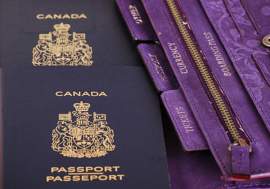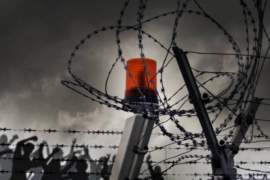
Historical and Modern Refugees of the World

World War II Refugees World War II is often thought of in terms of the amounts of lives lost within the span of the conflict. In all, some 70 million citizens of the world perished as a result of the following notable events: the invasion of Poland by Germany, the intended elimination of the JewsNazisimmigrationDisplaced Persons Acts of 1948 and 1950JewsPalestine
Cold War Refugees
The duration, in particular, is worth mentioning. While World War II finished in less than a decade, the specter of Communism hung over the Eastern Bloc for more than half a century, and the Cold War itself began with the end of WWII and terminated with the fall of the Soviet Union in 1991. Hundreds of thousands of lives were impacted by the Cold War, to boot. Political/social/economic uprisings in Hungary, Czechoslovakia and Poland led to spikes in refugee migrations on the European continent.
Elsewhere, human rights abuses and poor standards of living led to waves of emigration from island nations like Cuba and Haiti. Still other groups like Soviet Jews and Central Americans were displaced by persecution and civil war, respectively. Even though it is branded a "cold war," this era was the breeding ground for adverse situations in its own right.
While often times refugees from a particular country will flee persecution from an outsider group or other foreign invader, another all-too-common reason people of a certain nationality will seek asylum is fear of the very forces that claim to represent their interests.
Refugees of Burma, continue to live in exile based on the offenses of their federal government against its own people. Aside from exorbitant taxessexual assaultsConsequently, over three hundred thousand Burmese refugees have found their way to refugee camps abroad. Even so, the plight of Burmese refugees does not end there. For one, Thai refugee camps, while still legitimate means of shelter, are nonetheless subject to attacks by non-residents.
Also, while the offenses of the Burmese government may yet loom largest, the Thai federal government often does not much help Burmese refugees. Not only are Thai laws regarding different types of refugees constantly in flux, but many Burmese refugees are forced to work long hours in unsafe conditions and for a pittance. Plus, for those Burmese nationals still seeking refuge, the current regime in Burma actively tries to prevent its citizens from leaving the country.
Partition of India Similar to the effect the dissolution of the Union of Soviet Socialist Republics had on the initial expulsion of people from territories, the Partition of India in 1947 involved the migration of large numbers of people across newly-formed boundaries. Unlike the unrest in the former republics of the Soviet Union, however, the Partition of India was a single event, yet the total number of displaced persons as a result of the separation of the Indian colony into the two independent territories of India and Pakistan was comparable to that of the Soviet refugees, if not exceeding it altogether.
Realistically, the creation of an independent Pakistan was an outgrowth of the larger Indian independence movement, which advocated civil disobedience in resistance to British ownership of the continent. However, the move for partition was not supported by all Indians, and besides, logistically, it was made very complicated by the sheer amount of people involved; more than 12 million Indians were made to leave their homes upon recognition of independence.
Moreover, the rush to remove Hindus and Sikhs to India, and Muslim Indians to Pakistan did not allow for the proper supervision by authorities to maintain peace. As many as a million Indian refugees were casualties of the religious rioting that plagued the post-partition diaspora
Balkans War
One of the biggest sources of diaspora migrations of refugees from the Balkans was that of the invasion of Albania by Greece circa the beginning of World War II. Following the invasion of Albania, Italy set its sights on Greece. Greece was resolved to resist any attempts to conquer it. The Greco-Italian Balkans War ensued, and ultimately, Greece succumbed after Nazi forces and former Greek ally Bulgaria entered the fray on the part of the Italians. Various Yugoslavian provinces become Nazi satellite states in the wake of the fall of Sarajevo in April of 1941, with the help of a minority of Yugoslavian forces with contributions from Hungary.
Greek and Yugoslavian losses in the Balkans War led to reorganizations and annexations of their territory, including the adoption of Northern Greece into Bulgaria, encroachments on the Ionian and Aegean Islands by Italy. New states, namely the nations of Croatia and Montenegro, in addition, were created as a direct result of this conflict. Most germane to refugee concerns, though, the Balkans War led to mass migrations of Greek and Yugoslavian refugees from Balkan lands. Close to 20,000 people were forcibly displaced from the Balkans in less than half a decade, not even including the untold number of Jews
Chechnya Revolten masse to refugee camps and other holdings in Kazakhstan, Central Asia and Siberia. Within these camps, numerous instances of human rights abuses occurred. Worse yet, heavy casualties resulted from the mere act of transporting these Chechens in boxcars to these destinations, not to mention those who were victims of the horrors of Nazi.
NEXT: The United Nations High Commissioner for Refugees





















